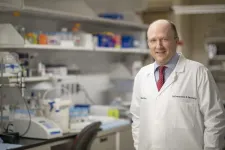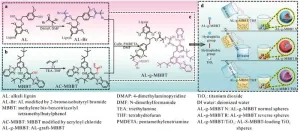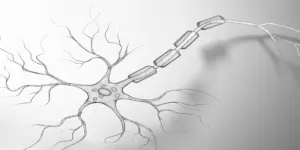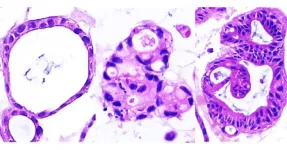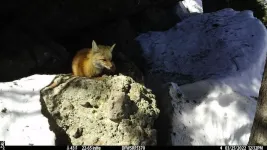(Press-News.org) New interpretations following the recent Sackett v. Environmental Protection Agency (EPA) United States Supreme Court ruling could strip federal protections from up to 90 million acres of U.S. nontidal wetlands – nearly all that exist in the coterminous US – according to a new study. The findings reveal the potential scope and impacts of the regulatory changes and highlight the uncertainty introduced by the ruling. Enacted in 1972, the Clean Water Act (CWA) aims to restore and protect the quality of U.S. waters and wetlands. These federally protected waters, known as “waters of the United States” (WOTUS), include navigable waters and their connected streams and wetlands. In May 2023, the U.S. Supreme Court’s ruling in Sackett v. EPA redefined which waters are considered WOTUS under the CWA, limiting federal protections to wetlands that have a “continuous surface connection” with larger water bodies, making them “indistinguishable” from streams, rivers, or lakes. According to Adam Gold, this notably narrow interpretation excludes many wetlands that were once previously protected despite their widely understood ecological significance. Moreover, the court’s ruling did not account for the estimated number of wetlands and ephemeral streams affected by the decision nor consider the environmental or economic consequences of this loss of protection. Using flood frequency as a quantitative measure of wetland “wetness,” Gold evaluated the potential impact of varying interpretations of the Sackett ruling and to estimate how much of the U.S.’s nontidal wetlands might lose protection. According to the findings, in the conterminous U.S., the area of nontidal wetlands estimated to lose federal protection under the Sackett decision ranges from 17.3 million acres (19% of nontidal wetlands) to nearly all 90 million acres. The lower estimate applies to isolated wetlands without considering "dryness," while more restrictive interpretations, which exclude "drier" wetlands, predict much larger areas of unprotected wetlands. For example, if wetlands must be at least seasonally or semi-permanently flooded to remain protected, between 55 million acres (61%) and 81.9 million acres (91%) of wetlands could lose federal protections, with nearly all wetlands excluded if permanent flooding is required. Gold’s analysis also considers state-level regulatory protections and public-land statuses, showing hotspots, particularly in the Southeast and Great Plains, where wetland protections are most vulnerable. In a Policy Forum, Dave Owen discusses the findings and those from several similar studies focused on the recent regulatory changes in greater detail.
For reporters interested in trends, a January 2024 study by Greenhill et al. used machine learning to predict the scope of regulatory protections under different past interpretations of WOTUS. Additionally, a June 2024 study by Brinkerhoff et al. shows that much of the flow in larger rivers across the U.S. stems from now unprotected ephemeral streams.
END
Supreme Court ruling could strip protections from up to 90 million acres of US wetlands
Summary author: Walter Beckwith
2024-09-26
ELSE PRESS RELEASES FROM THIS DATE:
Ancient, buried wood inspires a possible low-cost method to store carbon
2024-09-26
Inspired by an ancient buried log, researchers present a novel method to remove and store atmospheric carbon for hundreds of years or more. It involves locking woody biomass away in “wood vaults.” The approach could provide a cost-effective solution to mitigate climate change. Achieving net-zero carbon dioxide (CO2) emissions is crucial for combating climate change, yet reducing fossil fuel emissions alone is insufficient to meet the Paris Agreement's targets. To achieve these goals, carbon dioxide removal (CDR) methods must be implemented, including engineering solutions, like direct air capture, ...
Removal of marine plastic fishery debris greatly reduces entanglement threat for endangered Hawaiian monk seals
2024-09-26
Large-scale removal of discarded fishing gear and other plastic debris from the waters of Northwestern Hawaii meaningfully reduced entanglement rates of endangered Hawaiian monk seals, according to a new study. The findings, which are drawn from more than four decades of data, offer promising evidence that marine debris cleanup programs are successful and that reducing plastic inputs and scaling up removal efforts could maximize conservation outcomes across marine ecosystems worldwide. Plastic pollution severely threatens marine ecosystems, ...
Climate change likely to increase diarrheal disease hospitalizations by 2100s
2024-09-26
By 2100, hospitalizations from diarrheal diseases are predicted to increase in the city of Dhaka in Bangladesh as a result of climate change, even if global warming stays under 2 degrees Celsius. Farhana Haque and colleagues from University College London, London School of Hygiene and Tropical Medicine and icddr,b report these findings in a new study published September 26 in the open access journal PLOS Neglected Tropical Diseases.
As one of the world’s most densely population cities, Dhaka deals with a high burden of diarrheal diseases. While some studies have looked at how weather affects diarrhea in Bangladesh, few have examined the future impact of climate ...
Cleveland Clinic researchers discover new bacterium that causes gut immunodeficiency
2024-09-26
September 26, 2024, Cleveland: Cleveland Clinic researchers have discovered a new bacterium that weakens the immune system in the gut, potentially contributing to certain inflammatory and infectious gut diseases.
The team identified the bacterium, Tomasiella immunophila (T. immunophila), which plays a key role in breaking down a crucial immune component of the gut’s multi-faceted protective immune barrier.
Identifying this bacterium is the first step to developing new treatments for a variety of inflammatory and infectious gut diseases. These conditions, including inflammatory ...
Research reveals impact of gut microbiome on hormone levels in mice
2024-09-26
Francis Crick Institute press release
Under strict embargo: 19:00hrs Thursday 26 September 2024
Peer reviewed
Experimental study
Animals
Researchers at the Francis Crick Institute have shown that the balance of bacteria in the gut can influence symptoms of hypopituitarism in mice.
They also showed that aspirin was able to improve hormone deficiency symptoms in mice with this condition.
People with mutations in a gene called Sox3 develop hypopituitarism, where the pituitary gland doesn’t ...
Lignin-based sunscreen offers natural and high-performance UV protection
2024-09-26
In a significant breakthrough for the cosmetics industry, researchers have developed a new type of sunscreen using lignin, a naturally abundant polymer, and titanium dioxide (TiO2). The study, led by Yarong Li and Zhiguang Tang, was published in the Journal of Bioresources and Bioproducts and details the innovative use of a dual-modified lignin sub-microsphere to enhance the SPF and improve the color of sunscreens.
Lignin, a byproduct of the pulp industry, is known for its UV-absorbing properties and antioxidant capabilities. However, its application in commercial sunscreens has been limited due ...
How are stretch reflexes modulated during voluntary movement?
2024-09-26
How did the bodies of animals, including ours, become such fine-tuned movement machines? How vertebrates coordinate the eternal tug-o-war between involuntary reflexes and seamless voluntary movements is a mystery that Francisco Valero-Cuevas’ Lab in USC Alfred E. Mann Department of Biomedical Engineering, set out to understand. The Lab’s newest computational paper published in the Proceedings of the National Academy of Sciences (PNAS) adds to the thought leadership about the processing of sensory information and control of reflexes during voluntary movements—with implications as to how its disruption could ...
Organoids derived from gut stem cells reveal two distinct molecular subtypes of crohn’s disease
2024-09-26
Crohn’s disease — an autoimmune disorder — is characterized by chronic inflammation of the digestive tract, resulting in a slew of debilitating gastrointestinal symptoms that vary from patient to patient. Complications of the disease can destroy the gut lining, requiring repeated surgeries. The poorly understood condition, which currently has no cure and few treatment options, often strikes young people, causing significant ill-health throughout their lifetime. One barrier to making progress in developing treatments has been the lack of preclinical animal models that accurately ...
Rates of sudden unexpected infant death changed during the COVID-19 pandemic
2024-09-26
HERSHEY, Pa. — The risk of sudden unexpected infant death (SUID) and sudden infant death syndrome (SIDS) increased during the COVID-19 pandemic compared to the pre-pandemic period, especially in 2021, according to a new study led by researchers at the Penn State College of Medicine. Monthly increases in SUID in 2021 coincided with a resurgence of seasonal respiratory viruses, particularly respiratory syncytial virus (RSV), suggesting that the shift in SUID rates may be associated with altered infectious disease transmission.
They ...
Genetic rescue for rare red foxes?
2024-09-26
A rescue effort can take many forms – a life raft, a firehose, an airlift. For animals whose populations are in decline from inbreeding, genetics itself can be a lifesaver.
Genomic research led by the University of California, Davis, reveals clues about montane red foxes’ distant past that may prove critical to their future survival. The study, published in the journal Molecular Biology and Evolution, examines the potential for genetic rescue to help restore populations of these mountain-dwelling red foxes. The research is especially relevant for the estimated ...
LAST 30 PRESS RELEASES:
Making lighter work of calculating fluid and heat flow
Normalizing blood sugar can halve heart attack risk
Lowering blood sugar cuts heart attack risk in people with prediabetes
Study links genetic variants to risk of blinding eye disease in premature infants
Non-opioid ‘pain sponge’ therapy halts cartilage degeneration and relieves chronic pain
AI can pick up cultural values by mimicking how kids learn
China’s ecological redlines offer fast track to 30 x 30 global conservation goal
Invisible indoor threats: emerging household contaminants and their growing risks to human health
Adding antibody treatment to chemo boosts outcomes for children with rare cancer
Germline pathogenic variants among women without a history of breast cancer
Tanning beds triple melanoma risk, potentially causing broad DNA damage
Unique bond identified as key to viral infection speed
Indoor tanning makes youthful skin much older on a genetic level
Mouse model sheds new light on the causes and potential solutions to human GI problems linked to muscular dystrophy
The Journal of Nuclear Medicine ahead-of-print tip sheet: December 12, 2025
Smarter tools for peering into the microscopic world
Applications open for funding to conduct research in the Kinsey Institute archives
Global measure underestimates the severity of food insecurity
Child survivors of critical illness are missing out on timely follow up care
Risk-based vs annual breast cancer screening / the WISDOM randomized clinical trial
University of Toronto launches Electric Vehicle Innovation Ontario to accelerate advanced EV technologies and build Canada’s innovation advantage
Early relapse predicts poor outcomes in aggressive blood cancer
American College of Lifestyle Medicine applauds two CMS models aligned with lifestyle medicine practice and reimbursement
Clinical trial finds cannabis use not a barrier to quitting nicotine vaping
Supplemental nutrition assistance program policies and food insecurity
Switching immune cells to “night mode” could limit damage after a heart attack, study suggests
URI-based Global RIghts Project report spotlights continued troubling trends in worldwide inhumane treatment
Neutrophils are less aggressive at night, explaining why nighttime heart attacks cause less damage than daytime events
Menopausal hormone therapy may not pose breast cancer risk for women with BRCA mutations
Mobile health tool may improve quality of life for adolescent and young adult breast cancer survivors
[Press-News.org] Supreme Court ruling could strip protections from up to 90 million acres of US wetlandsSummary author: Walter Beckwith
